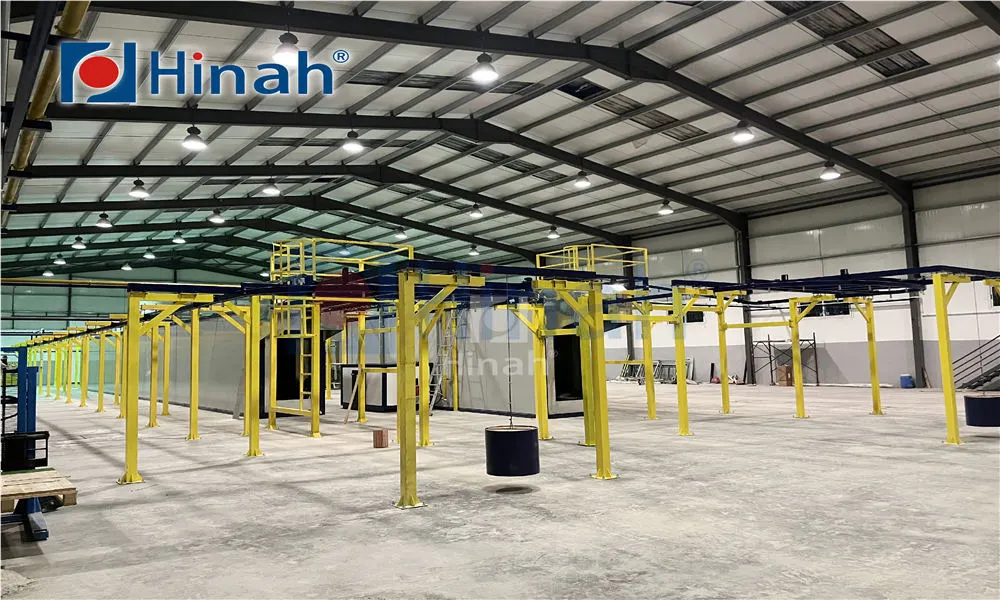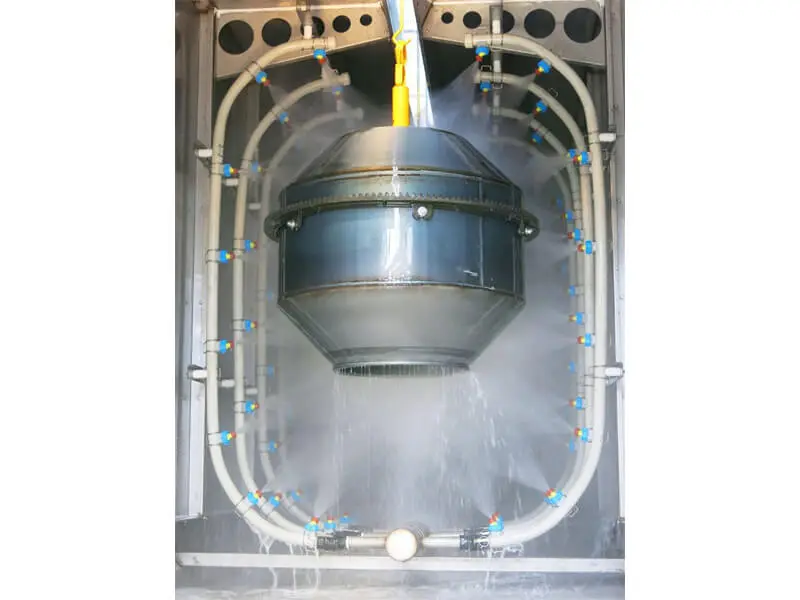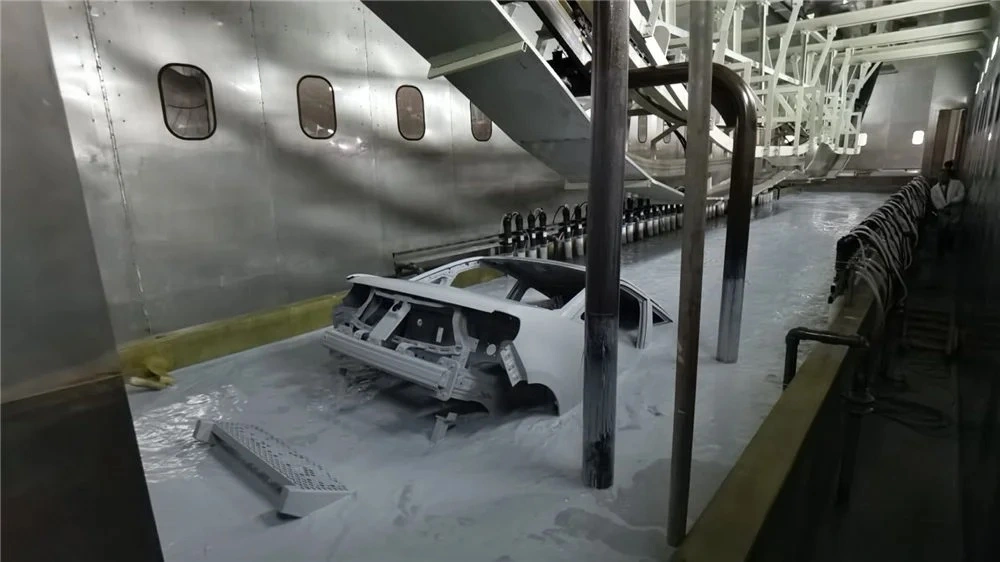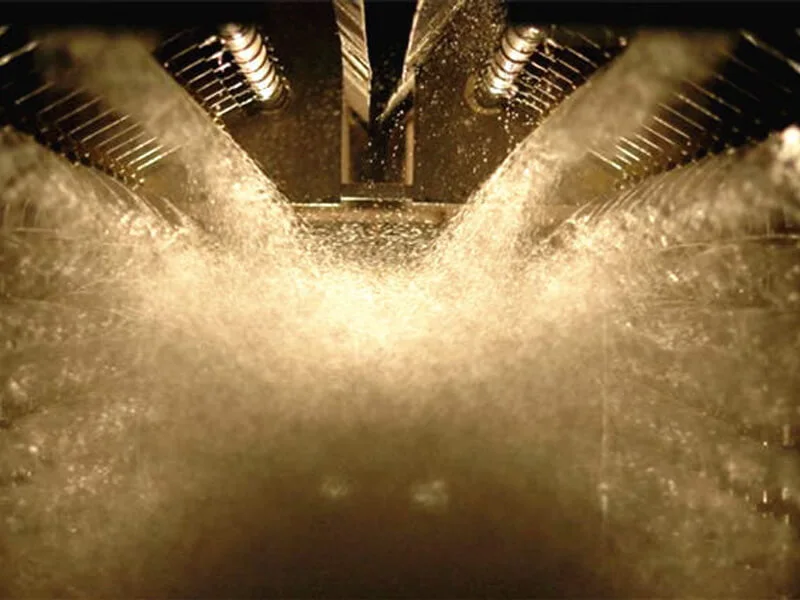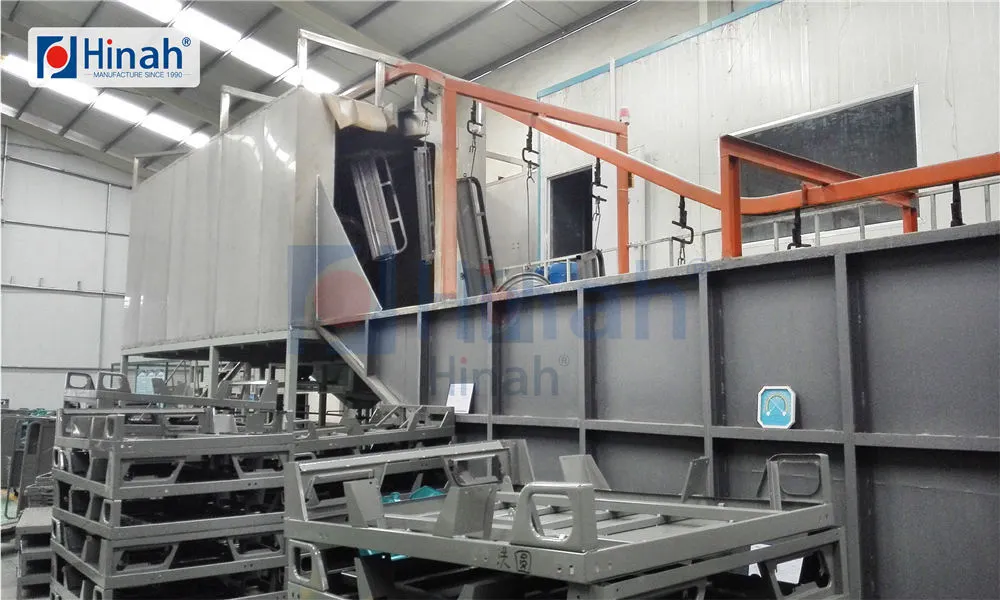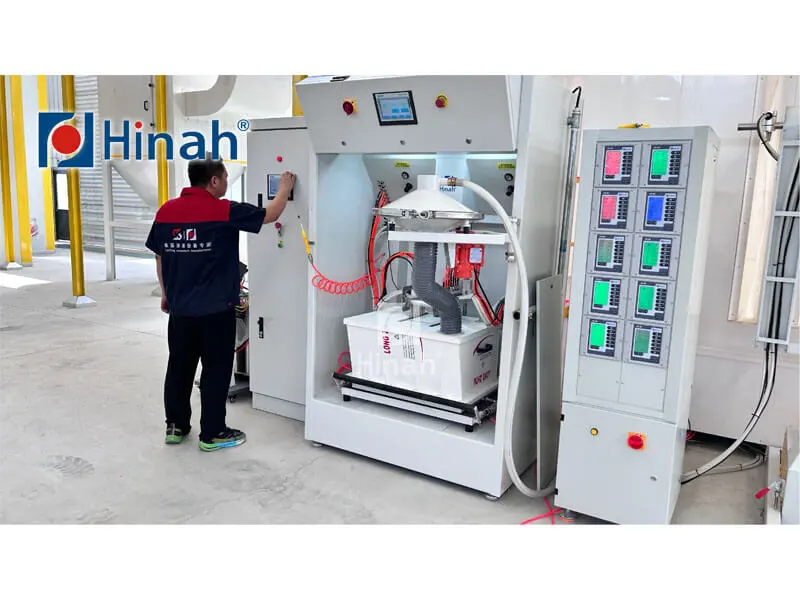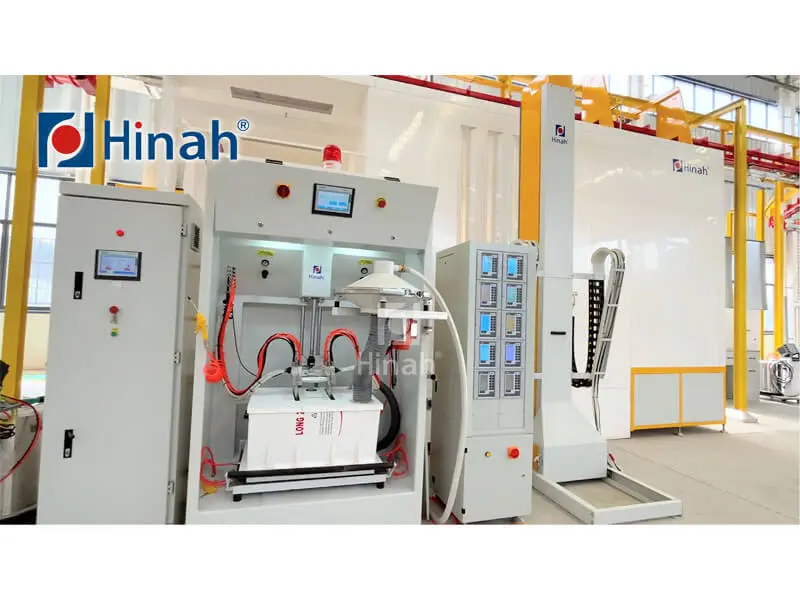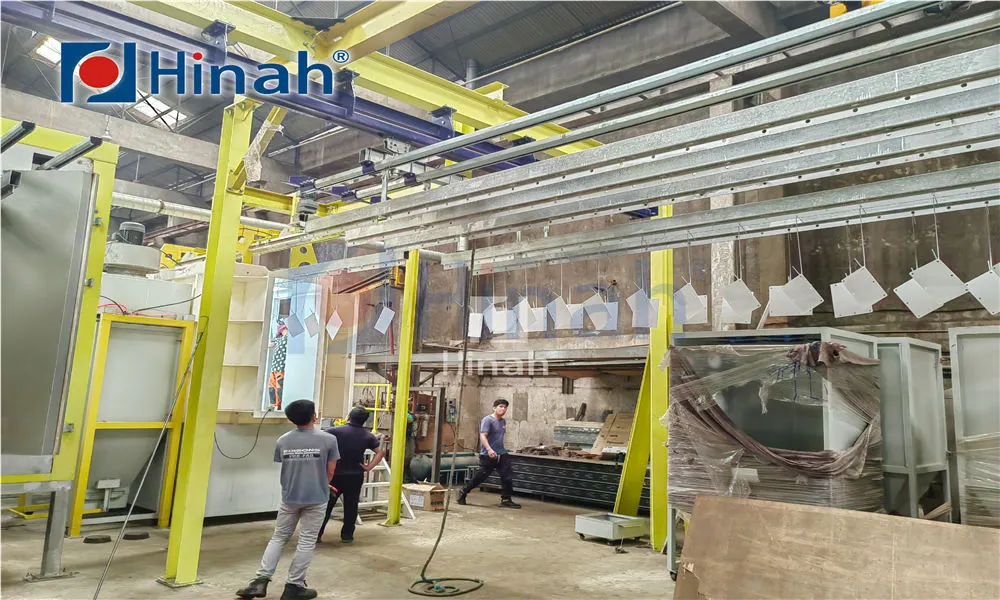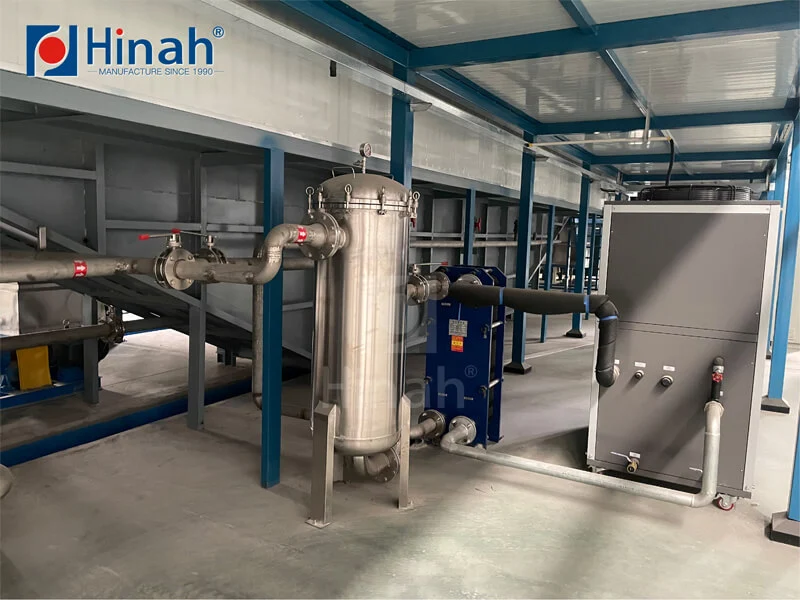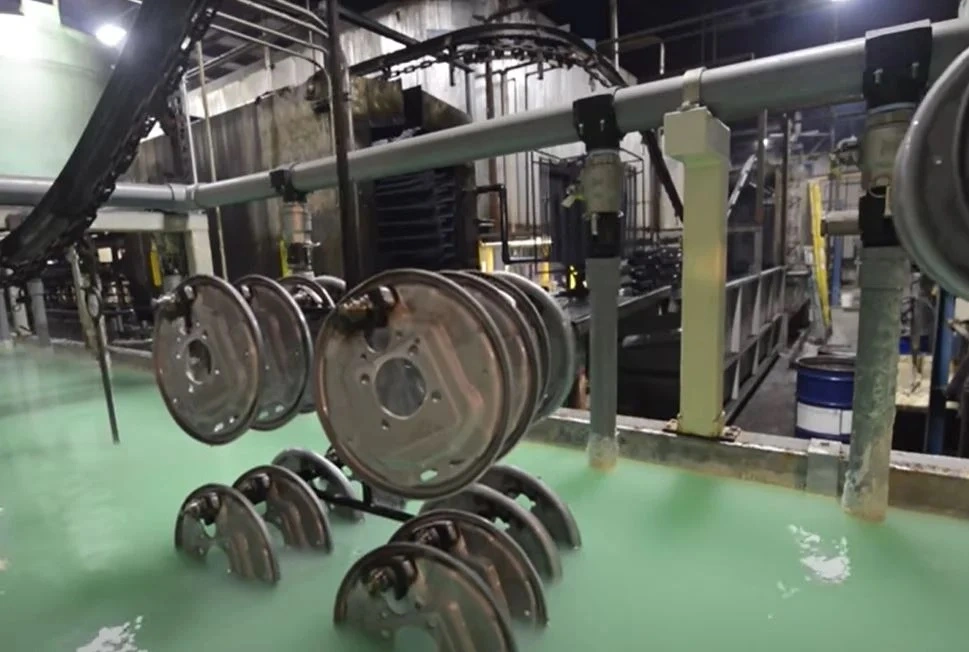In the world of industrial and architectural finishing, few technologies have made as significant an impact as powder coating. This dry finishing process provides a high-quality, durable, and environmentally friendly alternative to traditional liquid paints. Whether you're a hobbyist looking to upgrade your workshop, a small business owner aiming to boost production quality, or a procurement manager for a large corporation, understanding the landscape of powder coating system technology is crucial. This comprehensive guide will delve into everything you need to know, from the core technology and key players like Powder Coating Systems Ltd to the practicalities of finding powder coating systems for sale and understanding the critical factors that influence powder coating system price. We will also explore how to evaluate and select from the leading powder coating system manufacturers to make an informed investment.
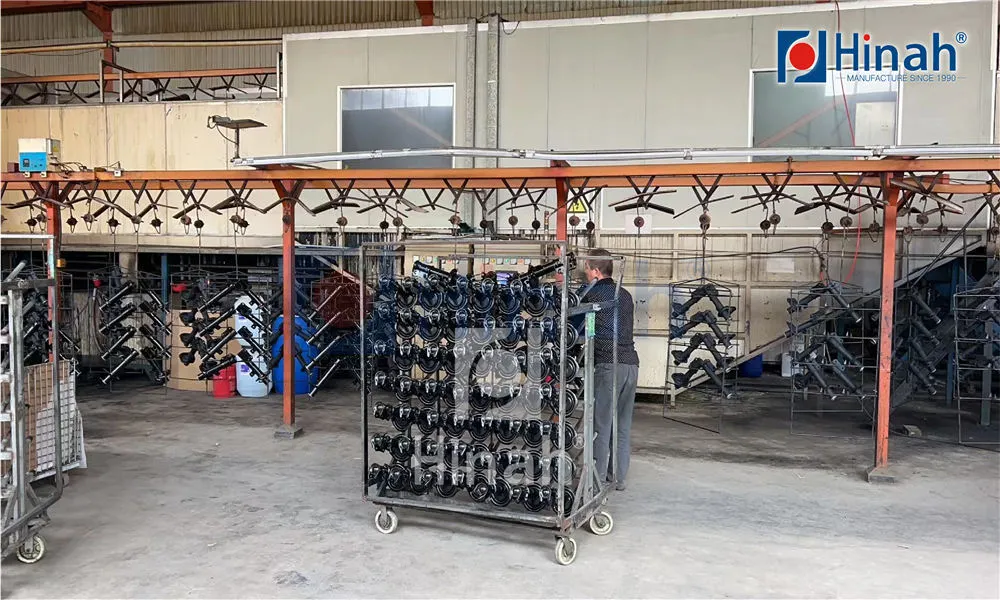
What is a Powder Coating System? Understanding the Core Technology
A powder coating system is not a single machine but a complete, integrated process line designed to apply and cure a dry, thermoplastic, or thermoset polymer powder onto a metal substrate. The result is a hard, protective, and attractive finish that is far more resistant to chipping, scratching, fading, and corrosion than conventional paint. The entire process is efficient, with overspray often being recoverable and reusable, leading to material utilization rates often exceeding 95%. A typical industrial system consists of several key stages:
Pre-treatment: This is arguably the most critical stage for achieving a quality finish. Parts are cleaned of oil, dirt, and contaminants and then chemically treated (through phosphate or chrome-free alternatives) to ensure proper adhesion and corrosion resistance. This stage often involves spray wash cabinets and immersion tanks.
Drying: After pre-treatment, parts must be thoroughly dried to remove any residual moisture before powder application.
Powder Application: The heart of the operation. Here, parts are coated using an electrostatic spray gun. The gun imparts a positive electric charge to the powder, which is then attracted to the grounded part. This electrostatic attraction ensures an even coat, even on complex geometries. Automated systems use reciprocators and robots for consistency.
Curing: After application, the coated parts travel into a high-temperature curing oven. The heat causes the powder particles to melt, flow together, and chemically cross-link to form a continuous, solid film. Once they exit the oven and cool, the parts are ready for use or assembly.
Exploring the Market: Finding the Right Powder Coating Systems for Sale
The market for powder coating systems for sale is vast and varied, catering to a wide range of needs and budgets. Your search will largely depend on your intended application volume, available space, and financial resources. Broadly, systems can be categorized as follows:
Batch Oven Systems (Manual Operations): Ideal for small shops, job coaters, and R&D facilities. These systems typically consist of a spray booth and a standalone batch oven. Operators manually load and unload racks of parts into the oven. They are the most common type of system found when searching for smaller-scale powder coating systems for sale.
Continuous Conveyorized Systems (Automated Operations): Designed for high-volume production, these systems feature an overhead or floor-mounted conveyor that moves parts continuously through each stage: pre-treatment, drying, application, and curing. They offer unmatched efficiency and consistency and are the backbone of major manufacturing plants.
Integrated Custom Systems: For highly specialized applications, many powder coating system manufacturers offer fully custom-engineered solutions. These can include specialized gun movers, unique oven configurations, and fully automated material handling.
When browsing listings for powder coating systems for sale, it's essential to consider whether a new, used, or refurbished system best fits your needs. Used systems can offer significant cost savings but may come with higher maintenance costs and outdated technology.
Decoding the Investment: Key Factors Influencing Powder Coating System Price
The powder coating system price is not a single figure but a variable that depends on a complex interplay of factors. Understanding these will help you budget accurately and compare quotes effectively. A basic small-scale setup can start from a few thousand dollars, while a large, fully automated line can run into hundreds of thousands or even millions.
Key factors affecting powder coating system price include:
System Type and Automation Level: A simple batch oven system is exponentially cheaper than a fully automated conveyorized line with robotic arms.
Size and Capacity: The physical dimensions of the oven and conveyor, as well as the system's throughput (parts per hour), are primary cost drivers. Larger ovens require more insulation, heating elements, and structural steel.
Pre-treatment Complexity: A simple 3-stage wash system is less expensive than a sophisticated 7-stage zinc phosphating line with precise temperature control and waste treatment.
Oven Technology: The type of heating (electric, gas, infrared), insulation quality, and combustion system significantly impact both upfront cost and long-term operational expenses.
Application Equipment: The choice between manual, semi-automatic, and fully automatic guns, along with the powder feed and recovery system (cyclone or cartridge), alters the price.
Control Systems: Basic manual controls are standard, but modern PLC (Programmable Logic Controller) systems with touchscreen HMIs (Human-Machine Interfaces) for recipe management and diagnostics add cost and value.
H2: Industry Leaders and Specialists: A Look at Powder Coating Systems Ltd and Other Manufacturers
When investing in a significant piece of equipment, the manufacturer's reputation is paramount. Among the many players in the industry, you will often come across established names like Powder Coating Systems Ltd. While this can be a specific company name (and it's always wise to research individual company reviews), it also represents a class of specialized firms dedicated to this technology.
Leading powder coating system manufacturers range from global corporations to regional specialists. They differentiate themselves through:
Engineering Expertise: The ability to design a system that meets precise technical specifications.
Quality of Components: Using durable materials for ovens and corrosion-resistant stainless steel for pre-treatment stages.
Technical Support and Service: Offering comprehensive installation, training, and ongoing maintenance support.
Spare Parts Availability: Ensuring that critical components are available to minimize downtime.
A company like Powder Coating Systems Ltd would typically focus on providing turnkey solutions, from initial design and fabrication to installation and commissioning. When evaluating powder coating system manufacturers, look for a proven track record, a strong portfolio of past projects, and clear customer testimonials.
How to Choose Among Powder Coating System Manufacturers
Selecting the right partner from the myriad of powder coating system manufacturers is a decision that will affect your operations for years to come. Here is a step-by-step approach:
Define Your Requirements: Clearly outline your production goals: part size, material, desired finish thickness, hourly output, and available facility space. This is your most important step.
Research and Shortlist: Use industry directories, trade shows (like The Powder Coating Show), and online searches to create a shortlist of manufacturers with experience in your specific industry (e.g., automotive, furniture, aerospace).
Request Detailed Proposals: Contact your shortlisted powder coating system manufacturers with your requirements. Ask for a detailed quote that breaks down equipment, installation, and any ancillary costs.
Evaluate the Proposal Holistically: Don't just choose the lowest powder coating system price. Evaluate the proposed system's efficiency, energy consumption, warranty terms, and the quality of the components used.
Check References: Ask each manufacturer for references from previous clients with similar projects. Contact them to ask about the equipment's performance, reliability, and the quality of the manufacturer's customer service.
Consider Future Needs: Choose a manufacturer and a system that can scale with your business. Can the line be easily expanded or modified later?
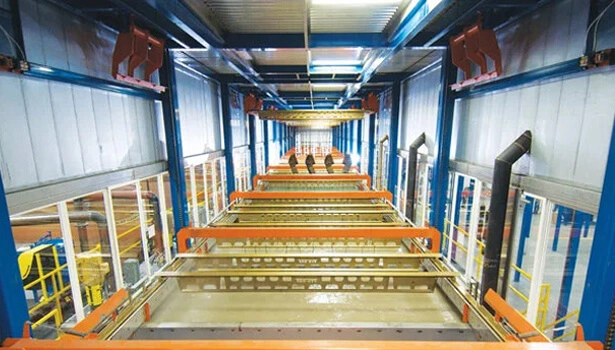
Beyond the Purchase: Installation, Operation, and Maintenance
Purchasing the system is only the beginning. Proper installation is critical for safety and performance. Reputable powder coating system manufacturers will often provide or recommend qualified installation teams. Once operational, training your staff on safe and efficient use is non-negotiable. This includes understanding the electrostatic application process, oven safety protocols, and powder handling procedures.
A preventative maintenance schedule is vital to maximize uptime and lifespan. This includes regularly cleaning the spray booth and reclaim system, checking filters, calibrating guns, and servicing oven burners and conveyors. Establishing a good relationship with your manufacturer or a local service provider ensures you have support when you need it.
The Future of Powder Coating Technology
The industry is continuously evolving. Leading powder coating system manufacturers are investing in innovations aimed at increasing efficiency and reducing environmental impact further. Trends include:
Low-Temperature Cure Powders: Allowing for curing at temperatures as low as 250°F (121°C), which saves energy and enables the coating of heat-sensitive substrates like certain plastics and pre-assembled items.
Enhanced IR (Infrared) Curing: Offering faster cure times and smaller oven footprints compared to traditional convection ovens.
Smart Factory Integration: Systems with IoT (Internet of Things) sensors that provide real-time data on system performance, predictive maintenance alerts, and seamless integration with broader factory management software.
Sustainable Practices: Continued development of powders with recycled content and systems designed to further minimize waste and VOC emissions (already near zero).
Investing in a powder coating system is a major step that can dramatically improve product quality, production efficiency, and environmental compliance. The journey involves careful consideration of your specific needs, a thorough evaluation of the options for powder coating systems for sale, and a clear understanding of the factors that dictate the final powder coating system price. By diligently researching and partnering with reputable powder coating system manufacturers, whether a well-known entity like powder coating systems ltd" target="_blank">Powder Coating Systems Ltd or another industry leader, you can secure a robust finishing solution that delivers exceptional value and performance for years to come. The key is to look beyond the initial price tag and focus on the total cost of ownership, quality, and the partnership the manufacturer offers.
FAQ
➤What is a powder coat system?
Powder coating is a form of metal finishing, used for industrial equipment. The dry powder material attaches to the metal surface through an electrostatic process. Curing with heat ensures durability and creates an appealing finish.
➤What is the process of powder coating?
Powder coating is a type of coating that is applied as a free-flowing, dry powder. Unlike conventional liquid paint, which is delivered via an evaporating solvent, powder coating is typically applied electrostatically and then cured under heat or with ultraviolet light.
➤What are the disadvantages of powder coating?
Although powder coating has many advantages, it also has disadvantages as well, including the following.
WILL BREAK DOWN IF EXPOSED TO UV RAYS.
COLOR CHANGE DIFFICULTIES.
START UP COSTS ARE GENERALLY HIGH.
DIFFICULT TO TOUCH UP WHEN MARRED.
PART HAS TO BE GROUNDED IN ORDER TO POWDER COAT.
➤What is the purpose of powder coating?
Powder coated products are more resistant to diminished coating quality as a result of impact, moisture, chemicals, ultraviolet light, and other extreme weather conditions. In turn, this reduces the risk of scratches, chipping, abrasions, corrosion, fading, and other wear issues. It's tough.


